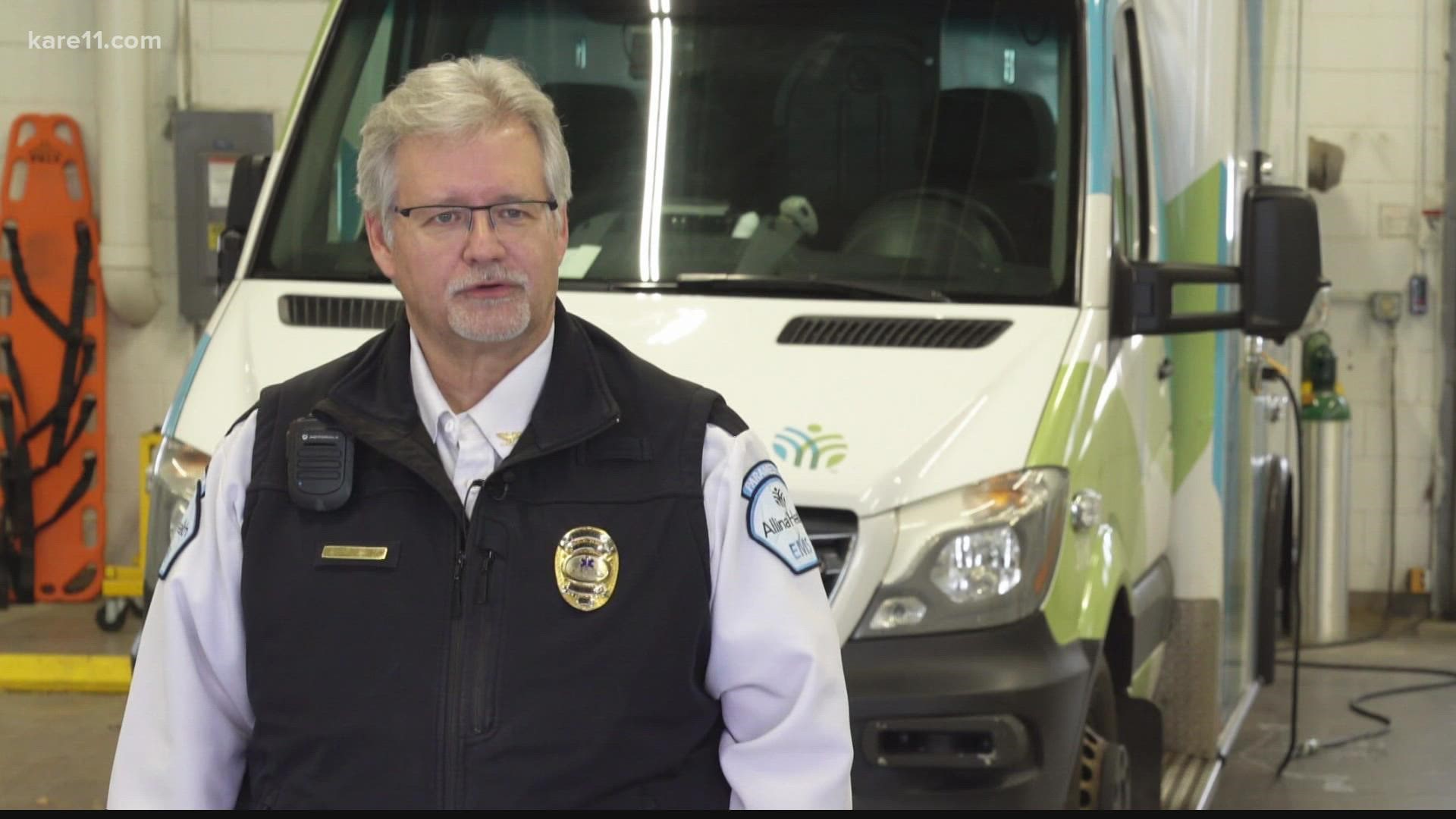MINNEAPOLIS — The snow is putting a lot of pressure on first responders with all the spin outs and crashes.
That's not new, it's a fact of winter and especially in the first few times snow flies, but this year the margin of error is really small on how quick patients can get treated, especially if they need a hospital.
"It's just a very stressful time,” Allina Health EMS Operations Manager Jeff Lanenberg says.
“Hospitals are at their capacity, which is causing closures, which then causes us to divert to other hospitals.”
As if things weren't already busy enough, with the normal everyday emergencies, and the COVID cases, now Lanenberg says they have winter slips and falls and car accidents to worry about.
"We're seeing increases in volume anywhere between 20-40% during peak times of the day,” Lanenberg says.
"We're definitely seeing numbers more than we saw last year. You compound that with staffing shortages such as our people being sick, the general public being sick more, 911 calls are on the increase, the overall volumes are very difficult to manage."
And while everyone who needs help will eventually get it, Lanenberg says with this many calls it can take some time to get in.
"When you're talking about actually bringing them to the hospital, now you're talking about extended wait times. We're starting to see what we call wall time now, which is the crew actually has to keep the patient on a stretcher because the hospital doesn't have capacity to take them at that point,” Lanenberg explains.
So, first responders and paramedics literally have to wait with the patient on the stretcher until they can get admitted, which is one less ambulance crew on the road.
And in some cases time is everything.
Time can literally mean the difference between life and death, which we've already seen a lot of on Minnesota roads this year.
According to the State Patrol, there have been more than 465 fatal crashes on Minnesota roads so far this year
That’s 100 more cases than last year, which was already 119 cases higher than 2019.
"I've never seen, in my 30 years of doing this, more traumatic traffic accidents than I've seen as of late. Speeds are higher, aggressive driving,” Langenberg says.
“People are clearly driving more aggressively than I've seen in a long time."
Some good news is EMS officials say these first few snow events are usually the worst.
After seeing snow once or twice people usually remember how to drive in winter and they don't see quite as many accidents.
But they're asking people to think twice before driving in the snow. Do you really need to go, or could you stay home and wait it out?
This year especially they say time off the road can really help them out.

